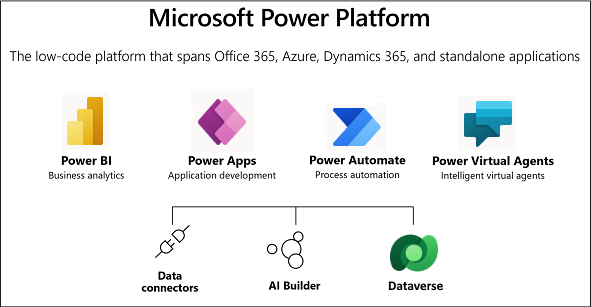The ability to process, analyze and make decisions upon data has become critical to many businesses. Digitization has created a high demand for tailor-made applications and tools that allow employees to work hands-on with data. However, writing code to develop software applications is a complex task, often requiring highly specialized developers with a background in various programming languages.
These developments have resulted in a sharp increase in the demand for software engineers who can come to the task. However, there is a significant talent shortage in the IT industry. Gartner reported this as one of the top five emerging risks, and 63% of senior executives recognized the shortage as a significant concern (1).
This increased demand for software and the shortage in development resources have created an opportunity for low-code application development platforms. These platforms allow non-programmers to develop business applications via drag-and-drop interfaces. This allows business people to build tools that fit their data needs and business processes. As low-code tools are created on a platform, they can easily be connected to other low-code applications and larger business processes.
Several of the big players in the IT industry are increasingly offering low-code platforms integrated into their cloud service offerings. One of the leaders in the 2021 Gartner Magic Quadrant for Low-Code Application Platforms is Microsoft (2). Their Power Platform provides tooling for UI construction, business process automation, and data analytics. With their Power Platform, Microsoft fills the gap between their existing office suite (e.g., Word & Excel) and highly custom applications requiring intensive coding. Allowing companies to digitize their outdated paper-heavy business processes as well as replace error-prone Excel-based data processes.
Most well known in Microsoft’s Power offering is the data analytics tool PowerBI, which allows business users to visualize data processes through an intuitive drag-and-drop interface (3). However, the Microsoft Power Platform offers many more low-code opportunities. For example, PowerApps, the platform’s development tool for mobile and web apps, allows business users to create applications, once only reserved for seasoned developers (4).
With demand for digitized business processes only increasing and the talent shortage in the IT industry not likely to disappear any time soon, low-code platforms are here to stay. Microsoft has positioned its Power Platform as the perfect growth opportunity for their existing MS Office Suite. If Microsoft has it their way, PowerBI & PowerApps will be as familiar to every business user as MS Word & Excel are today.
(1) https://www.gartner.com/en/newsroom/press-releases/2019-01-17-gartner-survey-shows-global-talent-shortage-is-now-the-top-emerging-risk-facing-organizations
(2) https://www.gartner.com/doc/reprints?id=1-275QSBDL&ct=210813&st=sb
(3) https://powerplatform.microsoft.com/en-us/power-apps/
(4) https://powerplatform.microsoft.com/en-us/power-automate/


Thank you Niels ! Interesting subject! The increased demand for software and the shortage in development resources can be seen as opportunities for new development platforms. I have never used Power platform and am quite curious to see how it works. In addition, to develop upon the Microsoft business portfolio, I am wondering how the Power platform and Excel coexist and if you could argue that there are overlap in the function and the needs that they fulfil.
Lastly, another aspect of this demand shift is the need for education and the growing online courses industry. IBM has created an educational platform within its employee’s pool so that they can keep up with the skills changes, Will this become mandatory for the companies that want their employee to stay updated with these technological changes?
Hi Niels, interesting post. Right now low code platforms represent a good response to the lack of coding and software engineering skills, I believe though, that it can only be a temporary solution. For sure those platforms can help managers whose don’t have an informatic background to organize and analyze data, and increase the efficiency of their company, but in the long term we need to solve the problem at its source, that is the lacking of offer of those skills. I think our educational systems play a major role in these. Schools should emphasize more the importance of those skills and starting to offer study program in coding and data analytics since the earlier years of education. its only in this way that we can hope to serve the increasing demand of data analyst, data scientist and software engineer which is not met right now. I believe that in these years every students form management, finance or economics should have a background in statistics, data analytic and coding in order to be competitive in the job market.
I fully agree with you! One extra thing I’d like to mention is that Low-code solutions do not change the fundamentals of software architecture and engineering. A deep understanding will still be of essential value in building large scale applications. Education is the only way to address this need and I think you highlight that very well!